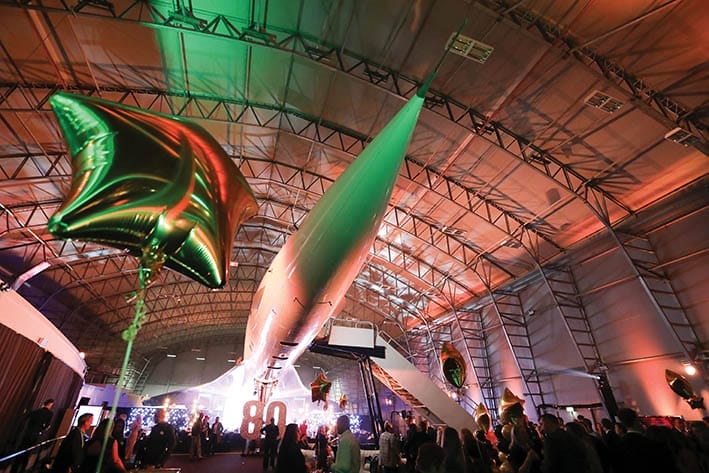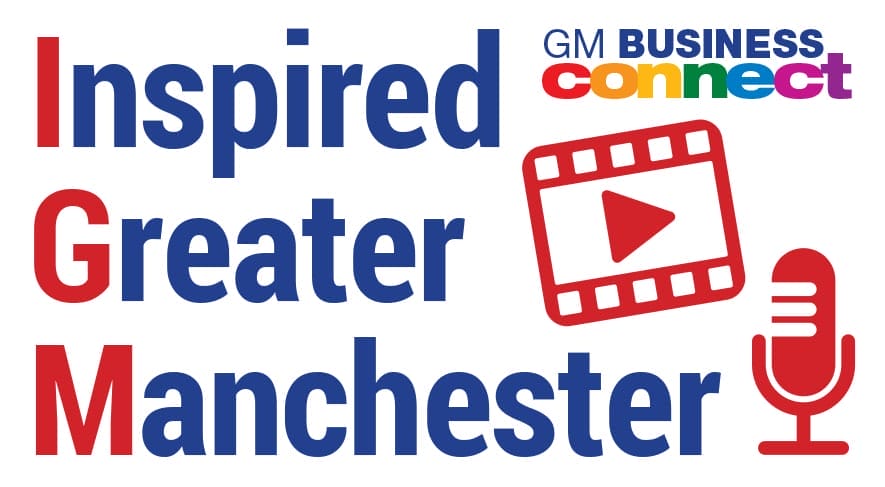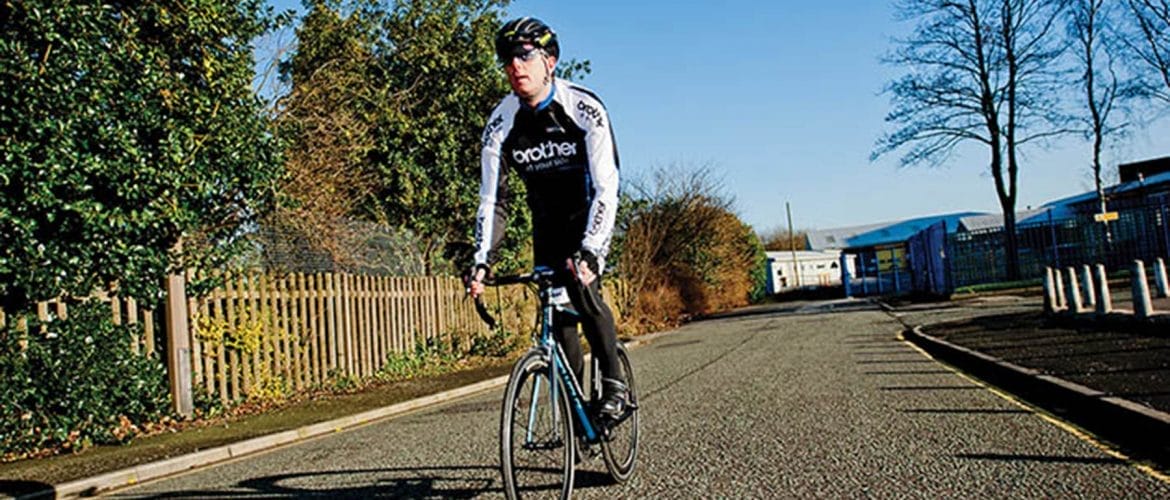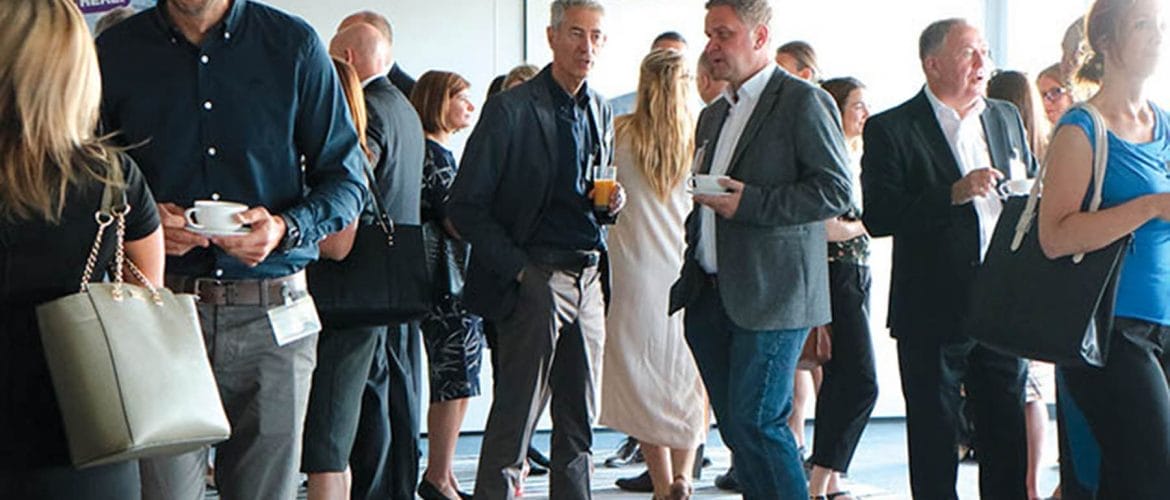Last year was a significant one for the airport. It celebrated its 80th birthday in June in which they looked back on what had been achieved and also forwards to the future.
As part of the celebrations The Concorde Conference Centre at Manchester Airport’s Runway Visitor Park recently played host to over 180 corporate guests as they celebrated the Airport’s milestone birthday. To mark the occasion, there was an aviation fun filled evening with guests checking in on arrival issued with boarding passes before dining under the wings of the iconic Concorde. The menu was inspired by the destinations Concorde flew to.
Guests were given access to the supersonic aircraft before watching a video celebrating the airport’s birthday created in conjunction with the poet, Tony Walsh. They also learnt about the airport’s £1bn transformation programme that will see Terminal 2 more than double in size. A raffle on the evening raised £1,460 for Manchester Airport’s chosen charity, CLIC Sargent and Flying Start, British Airways’ charity.
If you’d like to book the Concorde Hangar at the Runway Visitor Park for your event contact our dedicated Events Team on 0161 489 8299 or email Cheryl Garnett, Conference Sales and Events Manager on Cheryl.Garnett@manairport.co.uk
A key part of the celebrations was the release of a poem and film called “Time Flies,” created by Tony Walsh. The film tells the story of Manchester’s evolution from a single wooden hut in 1938 to the UK’s third largest airport and a key driver of global trade and tourism for the whole of the North. It featured poignant memories from passengers, businesses and airport workers past and present, with the words used to narrate the footage penned by famous Mancunian wordsmith Tony.
Since June the airport has been busy with lots of other activity to celebrate the occasion. This has included planting 80 oak trees (the official gift for an 80th) with various community groups across the North of England, opening up its archives, tea parties for the local community and working with KLM, who had the first commercial flight from Manchester. Manchester was the first city in Great Britain to establish a municipal aerodrome when an Air Ministry licence was granted to the Corporation on 22 April 1929. In January 1934, an airline’s senior pilot claimed that the existing Barton site for Manchester was unsuitable, and by July 1934 the City Council had chosen Ringway, as Manchester Airport used to be known, as a new home. The original 1938 route network included the exotic hotspots of Western Super-Mare, Croydon and Doncaster whereas Manchester now serves more than 220 international destinations worldwide including Beijing, Houston, Mumbai, San Francisco, Singapore and Boston.
In less than three months, Manchester Airport, the third largest in the UK, will open the first stage of its £1bn transformation programme.
The programme will provide the millions of customers that use the airport every year with facilities that combine a contemporary look and feel with state of the art services. The key element is the expansion and reconfiguration of Terminal Two, to become the airport’s primary terminal building. The first pier and multi storey car park will open in April. As part of the programme, all passengers will see significant improvements including the latest self-service check-in terminals, improved security processing, more e-gates and new lounges and stands. It will allow us to introduce the latest technology and systems to improve customers’ experience and make it easier to travel through the airport. New stands and piers will also be introduced, offering better departure gate facilities.
It’s not just the terminal that is being enhanced. To maximise the benefits of the redeveloped Terminal 2, a lot of work is needed out on the airfield and work is progressing well on a new dual taxiway that will maximise the use of the two runways we have at Manchester. The works will see 80,000m2 of new taxiway and apron, 40,000m3 of concrete poured and sixteen miles of cabling installed with the aim of all excavated material being diverted from landfill throughout. The work is due to be completed by July 2020. Once finished, it will improve aircraft access between the runways and new terminal, leading to reduced taxi times and minimising fuel burn. The works are the biggest changes to the airfield since Runway 2 came into operation in 2001.
To maximise benefits to the local community the airport has worked with its construction partners and suppliers to ensure that where possible money is being spent in local supply chain. As one of the biggest construction projects in the North of England there are currently more than 1,300 people working on site – including 93 apprentices in various trades. As the project reaches its peak at the beginning of next year that number is expected to raise to nearly 1,500 people working on site with a target of 150 apprentices. The scheme is also benefiting local suppliers and SMEs across the North West. Since the first spade went in the ground £220m has been spent with the supply chain within a 35 mile radius of the airport, many of whom are SMEs.
Looking further ahead in the scheme after work on the terminal extension is complete work will begin on refurbishing the existing Terminal 2 building to bring it up to standard, this is set to open in 2022. Whilst a further two piers will also be constructed with the second pier delivered in 2022 and the third
in 2024.









